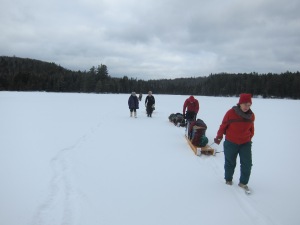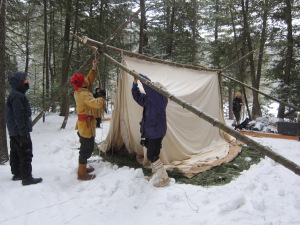This morning at breakfast, my husband put on a Santana CD that we discovered in a box. With a whoosh, the music from the 60’s carried me back to my primary grade school and to the sleep-overs at my best friend’s house. Her name was Cotton.
Now there was an artsy family! Mrs. S and Cotton and her 2 sisters were all artists. They were always making stuff: drawings, paintings, jewelry, paper mache, macramé. They wore fashionable mini skirts, and big earrings, bikinis and low-slung blue jeans. Mrs. S always had a book and a sketchbook by her side. She would sit for hours at the table, smoking, sipping wine, talking about colour and travel and dreaming out the window. Rock and roll music throbbed out of the stereo. (Was it Santana?) More than once, I caught Mrs. S dancing with her boyfriend J in the smoky haze that hung in the air. The house was shabby chic, and so were their friends who dropped in. On weekends, they’d go to the drive-in movies. I admired them and their worldly life deeply. When I was 10, Cotton moved away and I lost contact with her and her family.
Nobody in my family smoked and my parents didn’t dance. My two sisters and I wore long, handmade dresses that partially covered the knee, and no jewelry. Sure, we made stuff, too. We learned to sew, garden, and cook. Our meager record collection consisted of hymns by George Beverly Shay and Schumann’s piano concerto in A-major (a favourite to this day.) My mother rarely sat down to rest. We didn’t own a TV and on weekends, we went to church. My family hung out with hard-working, practical, (still very fun and loving) Mennonites. There just was no hope for me as a visual artist.
At first, I missed Cotton. Drawing helped me to feel a connection with her and her family, but I thought less and less about them as time passed.
Forty years later, I visited a relative in Florida. One small painting on her wall was signed Carol S. That was Cotton’s oldest sister! My hostess had taken a painting course from her in a neighbouring town in Florida. She taught on Thursday mornings.
That Thursday, I was there early and watched Carol set up her class (Was that middle-aged woman really Carol?) before I had the nerve to interrupt her and introduce myself. There was a pause as I watched her reach far back into her memory. “Yes! You were Cotton’s friend. Of course, I remember you!” We arranged to meet at a café the next day to talk. Cotton and her family had moved to Florida in the early 70’s. Cotton married young, but, soon after her marriage, she was coming home from working late at a restaurant and was hit by a truck and was instantly killed. Mrs S. was also dead.
We forgot to talk about art.
It’s ironic that I end up being the artist and Cotton of the talented, stereotypically artsy family never got the chance. The injustice and mystery of it hit me anew as I listened to Santana. (What the heck does Santana have to do with reopening these memories?) To what degree did Cotton and her family nudge me into an art career? I will never know. I can just bow my head in reverence to those who cross our paths in life and silently and mysteriously change the direction of our lives or maybe they don’t.
Despite our UNartsy upbringing, three of us four siblings ended up in a career in the fine arts. Who’s to say what the artistic temperament is?
I really must get back to work in the studio.







